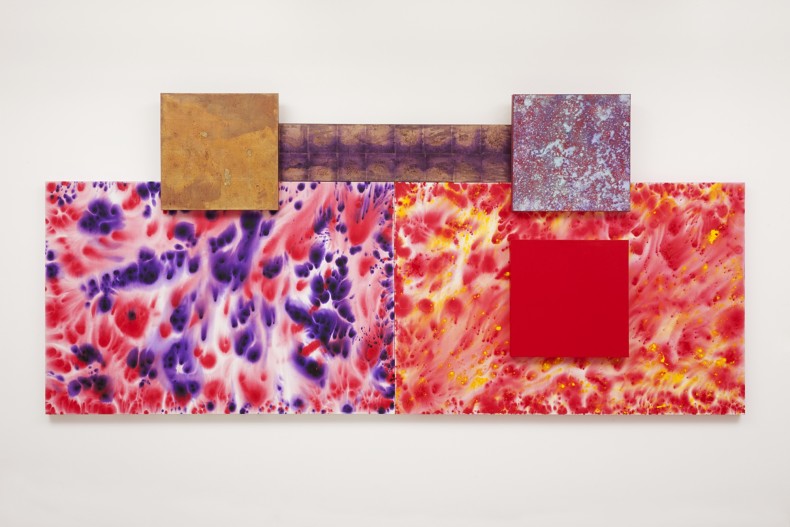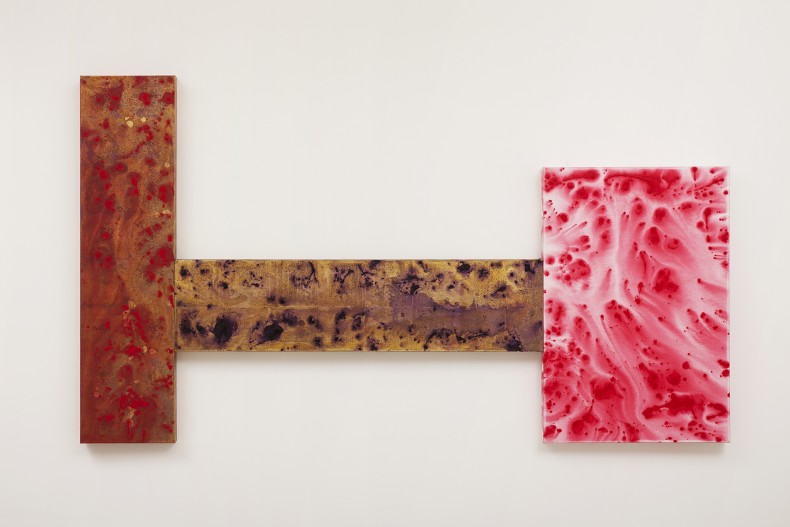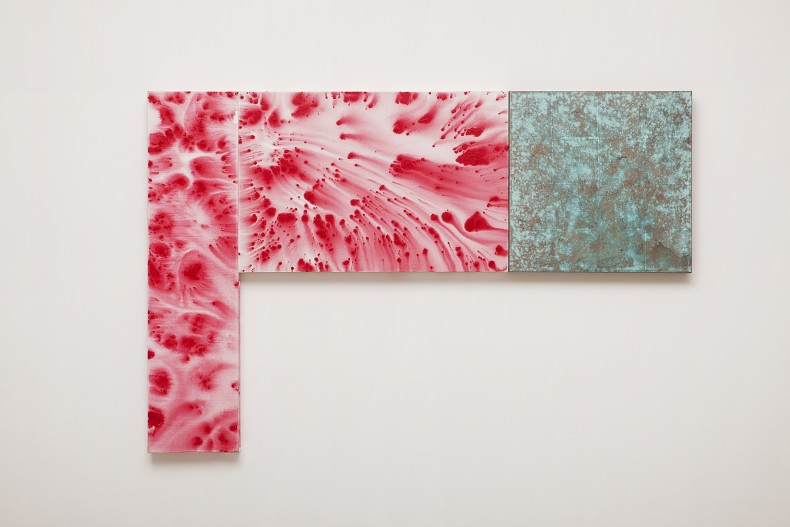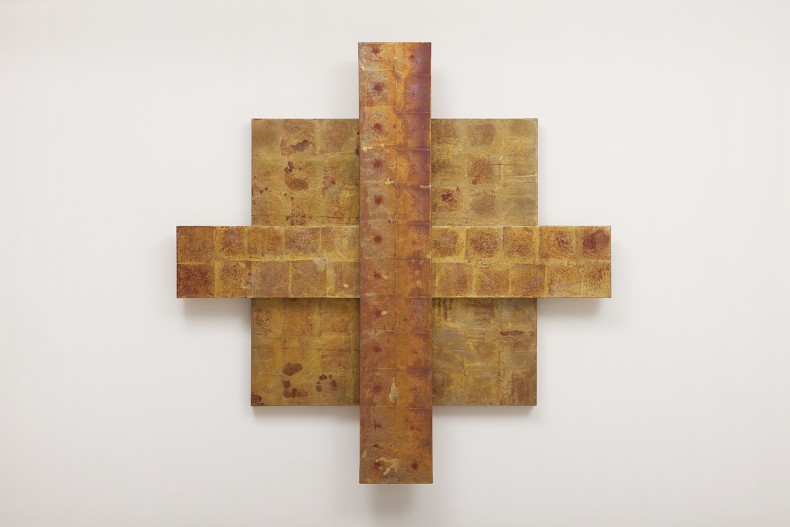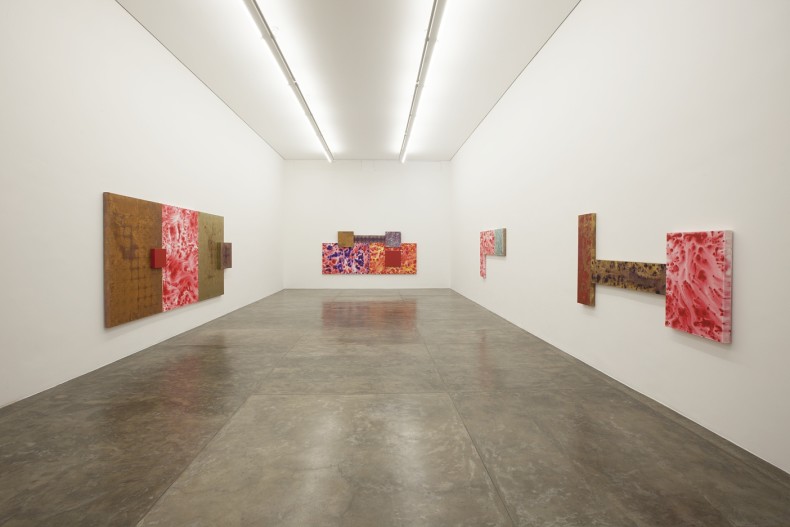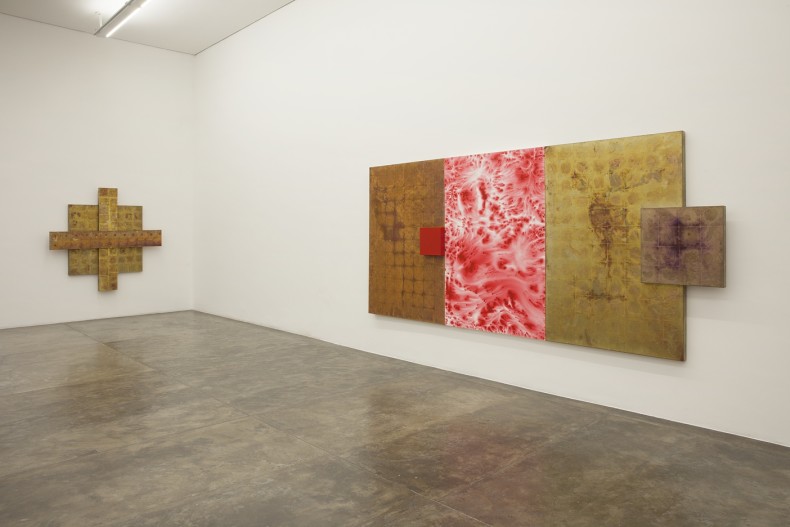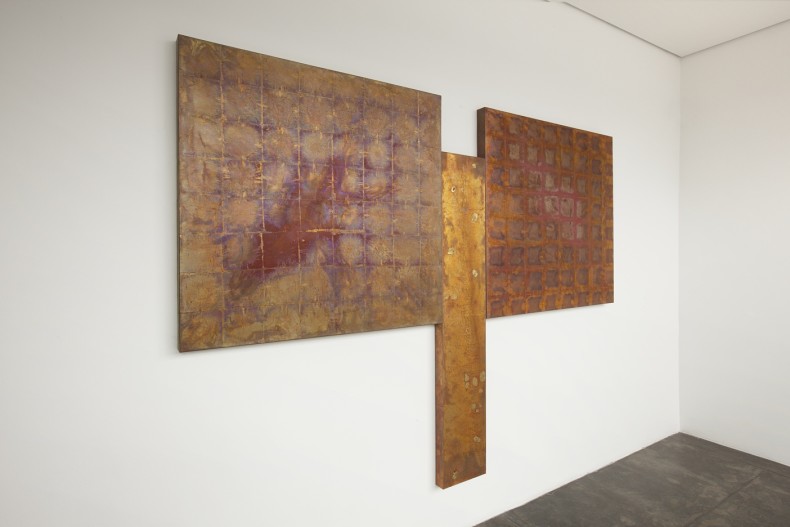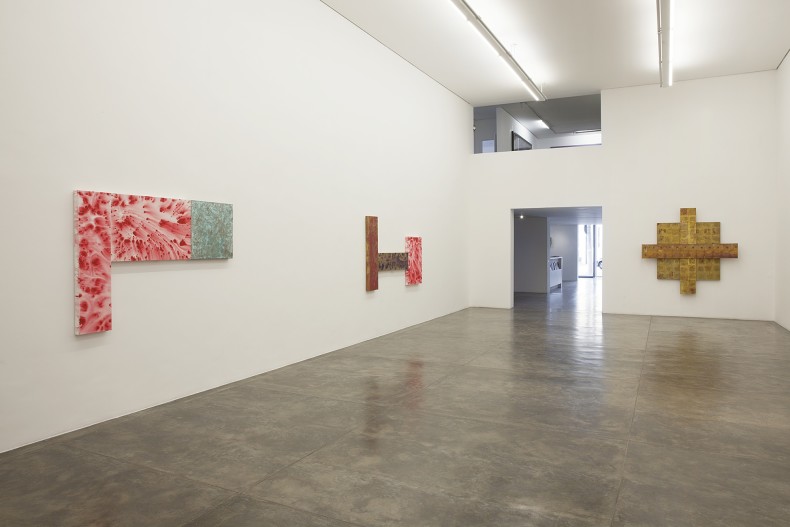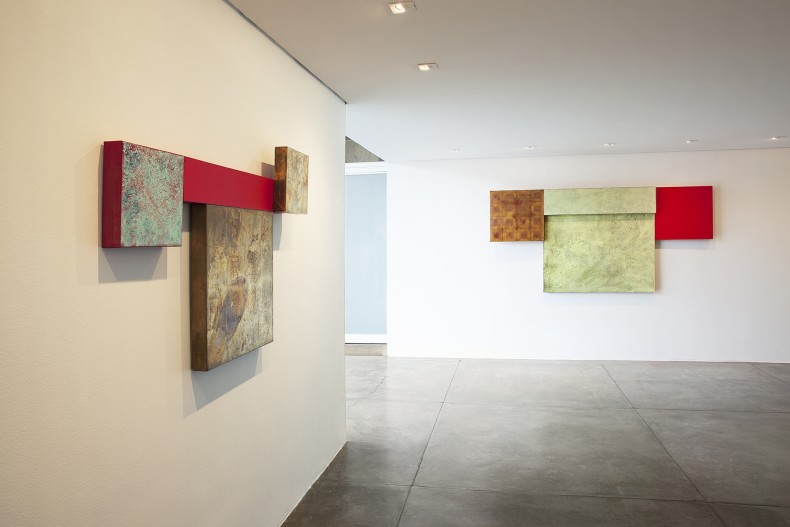Galeria Nara Roesler will host from April 1st to May 6th a show featuring the recent production of Brazilian art icon, Antonio Dias.
The selected pieces are part of the artist’s recent production and demonstrate the strength and freshness of the work of Dias, who continues to restlessly research on an organic painting that is alive and in consonance with the present.
The artist is also on show at Fundação Iberê Camargo with the exhibition Potência da Pintura, curated by Paulo Sergio Duarte. The show opens on March 13th.
About Dias’ paintings, art critic Sonia Salztein wrote: "Antonio Dias’ recent set of paintings follow the path chosen by the artist as of the mid-1980s. These works confirm procedures that were characteristics of what he began to do at that time." What we see are assemblages of chaotically put together juxtaposed and superimposed paintings that deconstruct the two-dimensional notion of painting by means of its volumes and its irregular contours.
Nevertheless, the alternation of framing and surface is not the only aspect that subverts the traditional pictorial quality: in the seemingly monotonous patterns printed in each module by the irregular pigmentation and almost left to their own devices as a result of the deposition of volatile material – pigments, mineral elements, agglutinants – Dias creates chromatic units that constitute a set that is similar to the pieces of a mosaic, forming deceitful visual nuances that fool the eye by abruptly rupturing color temperatures and organic patterns.
By means of this multitude of converging actions, the artist makes the pictorial procedure itself more complex, which even consciously opens space for chance to act. Dias frustrates the expectation of the gaze in a movement that awakens the spectator who is used to the harmony and the perfection typical of the industrial and technological world.
Or even, again according to Sonia Salztein, "all of this has resulted and still results in a painting that antagonizes the optical statute and the vertical condition of the painting, even though this painting must always be supported in both. The antagonism becomes radical and reaches an impasse in the current production, and this is why these paintings are relevant in the contemporary debate on painting – precisely the notable paradox between the absence of declared expressivity in each one of their surfaces and the excessive and misplaced dramatic feature, which they have expelled from the painting and that, since it can no longer belong to the painting or to the accidental image that inevitably is detached from it, becomes tensely involved in the distanced and, let’s say, 'parapictorial' use of pictorial material. This misplaced dramatic feature that is perceived by means of a sort of rehearsed ritual of procedures is, as said before, what makes these works extremely interesting and updated."
Thus, Dias’ work’s research and the pioneer spirit remain active; and these features have always marked the work of this Paraíba-born artist since he became involved in the art world, when he moved to Rio, in the late 1950s, and took engraving classes with Oswaldo Goeldi (1895-1961). In 1966, his production was strongly marked by conceptual works, such as the series The Illustration of Art. Later, he created pieces that are presented as self-portraits, such as The Art of Transference (1972) and A Fly in My Movie (1974-76). The participation of the public in his work is, often, intensely required, as in the 1968 installation Faça Você Mesmo: Território Liberdade (shown at the 29th São Paulo Biennial, in 2010).
An artist who works with painting, installation, photography, artist’s book, video and other techniques, Antonio Dias is described by critic and curator Paulo Herkenhoff as "the main nexus between neoconcrete artists and the 1970’s artists: between Hélio Oiticica and Cildo Meireles, Lygia Clark and Tunga, the non-objects and Waltercio Caldas, while remaining close to Ivens Machado and Iole de Freitas, or even to those who worked in the 1960s together with Cildo, such as Barrio, Raimundo Colares and Antonio Manuel. Dias seasons the presence of the word between conceptual art and the tradition of concrete poetry."
about the artist
Antonio Dias was born in Campina Grande, Paraíba, in 1944, and lives and works in-between Rio de Janeiro and Milan. He participated in the 1981, 1994, 1998 and 2010 editions of the São Paulo Biennial, Brazil. Some of his recent group shows include Mitologias por procuração(Museu de Arte Moderna de São Paulo, São Paulo, Brazil, 2013);Biografia incompleta (Museu de Arte Contemporânea de Niterói, Niterói, Brazil, 2013); América do Sul, a pop arte das contradições(Museu de Arte Moderna do Rio de Janeiro, Rio de Janeiro, Brazil, 2013); Arte & política: enfrentamentos, combates e resistências(Memorial Getúlio Vargas, Rio de Janeiro, Brazil, 2013); O agora, o antes: uma síntese do acervo do MAC (Museu de Arte Contemporânea da Universidade de São Paulo, São Paulo, Brazil, 2013); O colecionador: vontade construtiva (Museu de Arte do Rio, Rio de Janeiro, Brazil, 2013); O abrigo e o terreno (Museu de Arte do Rio, Rio de Janeiro, Brazil, 2013), Pop, realismi e politica (Galleria d'Arte Moderna e Contemporanea, Bergamo, Italy, 2013); Circuitos cruzados(Museu de Arte Moderna de São Paulo, São Paulo, Brazil, 2013);Order, chaos, and the space between (Phoenix Art Museum, Phoenix, USA) and Open work (Hunter College, New York, USA, 2013). Some of his recent solo shows include: In conversation: Hans-Michael Herzog and Antonio Dias (Museum of Fine Arts, Houston, USA, 2012);Anywhere is my land (Pinacoteca do Estado de São Paulo, São Paulo, Brazil, 2010). His works are part of international public collections, such as: Museum of Modern Art, New York, USA; Ludwig Museum, Cologne, Germany; Daros Collection, Zurich, Switzerland; Stadtische Galerie im Lenbachhaus, Munich, Germany; Museo de Arte Latinoamericano de Buenos Aires, Buenos Aires, Argentina; Fondazione Marconi, Milan, Italy; and Centro Studi e Archivio della Communicazione, Università de Parma, Italy. His work is represented in the collections of Brazilian museums, such as: Museu de Arte Moderna do Rio de Janeiro, Rio de Janeiro; Museu de Arte Contemporânea do Paraná, Curitiba; Museu Nacional de Belas Artes, Rio de Janeiro; Museu de Arte Moderna de São Paulo, São Paulo; Itaú Cultural, São Paulo; Pinacoteca do Estado de São Paulo, São Paulo; Museu de Arte Contemporânea da Universidade de São Paulo, São Paulo; Museu de Arte Moderna Aloisio Magalhães, Recife; <em>Museu de Arte Contemporânea de Niterói / Coleção Sattamini, Niterói; and Museu de Arte de São Paulo Assis Chateaubriand, São Paulo. The exhibition Antonio Dias – Potência da Pintura is being held at the Fundação Iberê Camargo until May 18th.
